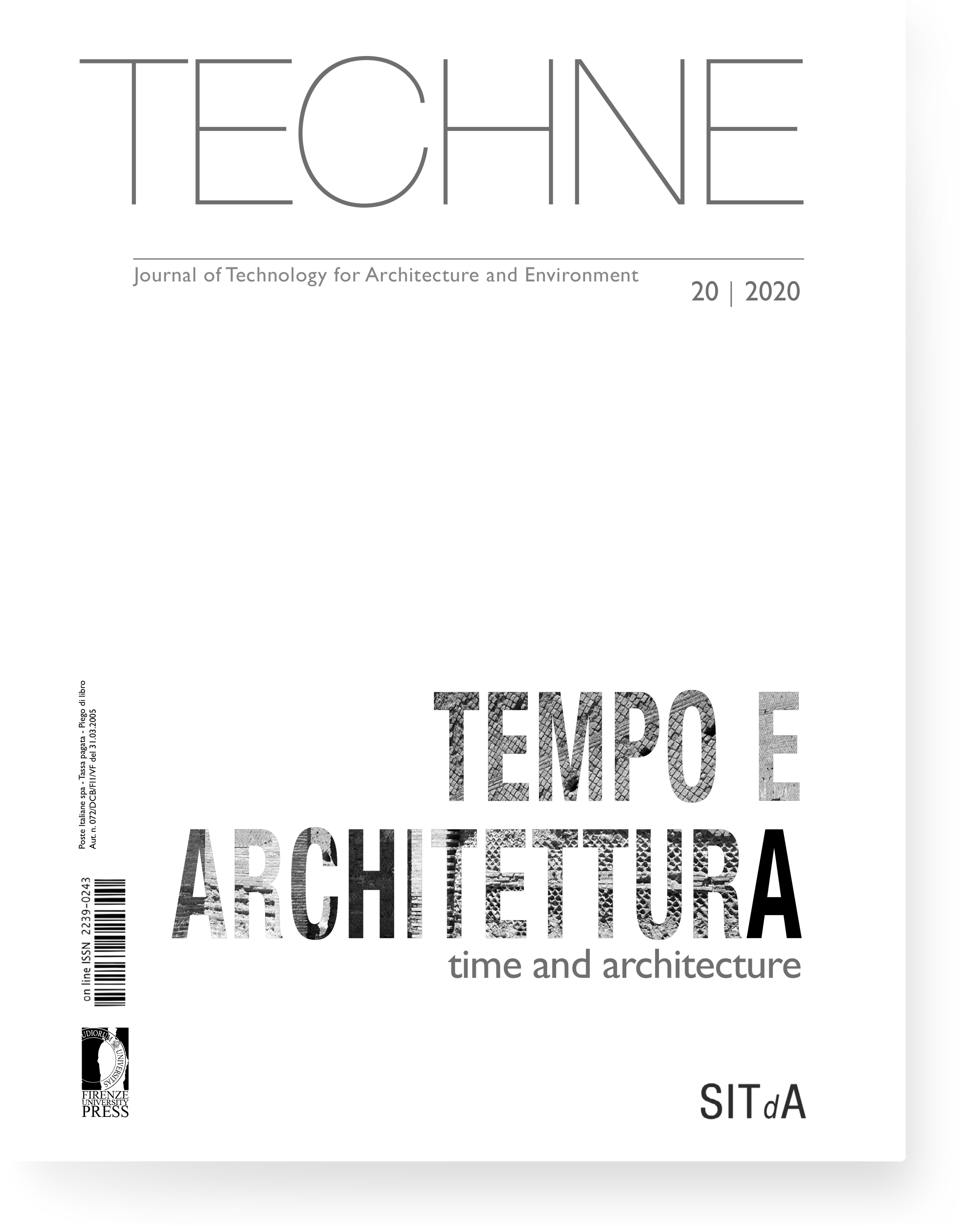Published 2020-10-07
Keywords
- .
How to Cite
Abstract
Architecture represents a primary hourglass marking the passage of time. It elevates the city to a preferred theatre for such representation, «[…] human time will never conform to the implacable uniformity or fixed divisions of clock time»1.
The discipline of architecture falls between art and science as a continuum between past and future, dialoguing with the passage of time, marking eras, tastes, and aspirations. «[…] Reality demands that its measurements be suited to variability of its rhythm, and that its boundaries have wide marginal zones. It is only by this plasticity that history can hope to adapt its classifications, as Bergson put it “to the very contours of reality”: which is properly the ultimate aim of any science» (Bloch, 1998)2.
Our relationship with time is articulated, differentiated, and dependent on discipline-related and personal variables. A unitary vision and perception of time is not possible; one need only think of the different relationships entertained with it by philosophers and athletes, physicists and poets, teachers and students.
Architecture, concurrently as an object and as a single element pertaining to a set, is born, lives, and often perishes according to the different relationship it has with the value of time. At times, the latter is assumed as a challenge to tend towards the absolute, at other times as an indicator of temporalized planning ability.







